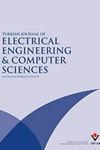混合机器学习模型预测慢性肾脏疾病,使用手工制作的早期健康康复特征
IF 1.2
4区 计算机科学
Q4 COMPUTER SCIENCE, ARTIFICIAL INTELLIGENCE
Turkish Journal of Electrical Engineering and Computer Sciences
Pub Date : 2023-10-07
DOI:10.55730/1300-0632.4028
引用次数: 0
摘要
慢性肾脏疾病因高血压、糖尿病、贫血、肥胖、吸烟等而增加。患有这种疾病的患者有时不知道最初的症状,使疾病诊断复杂化。本文提出慢性肾脏疾病(CKD)预测模型,将CKD患者与NCKD(非CKD)进行分类。拟议中的研究分为两个主要阶段。首先,我们通过logistic回归和比较检验发现比值比可以识别肾脏早期危险因素。MRI和区分CKD和NCKD受试者。在第2阶段,LR、LDA、MLP分类器通过提取MRI特征来预测CKD和NCKD。随机血糖和血清肌酐的比值比较高,而钠、钾水平、堆积细胞体积、白细胞计数和红细胞计数在CKD中较低。对比结果显示,CKD患者血糖随机升高,血清肌酐水平升高,钠、钾、堆积细胞体积、白细胞和红细胞计数下降。对于训练和测试数据集,LR的准确率分别为98.5%和97.5%。训练集和测试集的LDA准确率分别为96.07%和96.6%。同样,MLP在训练和测试数据集上的准确率分别为95%和94.1%。最后,我们对LR模型使用了5倍CV方法。训练和测试数据的LR平均准确率分别为0.954和0.942。根据LR,血清肌酐、白蛋白、糖尿病、红细胞计数、脓细胞和高血压是区分CKD和NCKD的最重要特征。拟议的战略最适合于实际实施,以减少该疾病的流行。本文章由计算机程序翻译,如有差异,请以英文原文为准。
Hybrid machine learning model to predict chronic kidney diseases using handcrafted features for early health rehabilitation
Chronic kidney diseases proliferate due to hypertension, diabetes, anemia, obesity, smoking etc. Patients with such conditions are sometimes unaware of first symptoms, complicating disease diagnosis. This paper presents chronic kidney disease (CKD) prediction model to classify CKD patients from NCKD (Non-CKD). The proposed study has two main stages. First, we found the odds ratio through logistic regression and comparison test to identify early risk factors from kidneys? MRI and differentiate CKD from NCKD subjects. In stage 2, LR, LDA, MLP classifiers were applied to predict CKD and NCKD by extracting features from MRI. The odds ratio of blood glucose random and serum creatinine was found higher, and levels of sodium, Potassium, packed cell volume, white blood cell count, and red blood cell count were found lesser in CKD. The comparison results show increase levels in blood glucose random, serum creatinine and decreased levels found in sodium, potassium, packed cell volume, White blood cell and red blood cell count respectively in CKD patients than NCKD subjects. The accuracies of LR were 98.5% and 97.5% for train & test datasets. While LDA accuracy was 96.07% and 96.6% for train and test datasets. Likewise, MLP attained were 95% and 94.1% accuracy for train and test datasets. Finally, we used 5-fold CV approach on the LR model. The mean accuracies of LR were 0.954 and 0.942 for training and testing data respectively. According to LR the serum creatinine, Albumin, Diabetes mellitus, red blood cells count, pus cell and hypertension were found to be the most significant features to discriminate the CKD patients from NCKD. The proposed strategy is best suited for practical implementation for reducing the disease's prevalence.
求助全文
通过发布文献求助,成功后即可免费获取论文全文。
去求助
来源期刊

Turkish Journal of Electrical Engineering and Computer Sciences
COMPUTER SCIENCE, ARTIFICIAL INTELLIGENCE-ENGINEERING, ELECTRICAL & ELECTRONIC
CiteScore
2.90
自引率
9.10%
发文量
95
审稿时长
6.9 months
期刊介绍:
The Turkish Journal of Electrical Engineering & Computer Sciences is published electronically 6 times a year by the Scientific and Technological Research Council of Turkey (TÜBİTAK)
Accepts English-language manuscripts in the areas of power and energy, environmental sustainability and energy efficiency, electronics, industry applications, control systems, information and systems, applied electromagnetics, communications, signal and image processing, tomographic image reconstruction, face recognition, biometrics, speech processing, video processing and analysis, object recognition, classification, feature extraction, parallel and distributed computing, cognitive systems, interaction, robotics, digital libraries and content, personalized healthcare, ICT for mobility, sensors, and artificial intelligence.
Contribution is open to researchers of all nationalities.
 求助内容:
求助内容: 应助结果提醒方式:
应助结果提醒方式:


